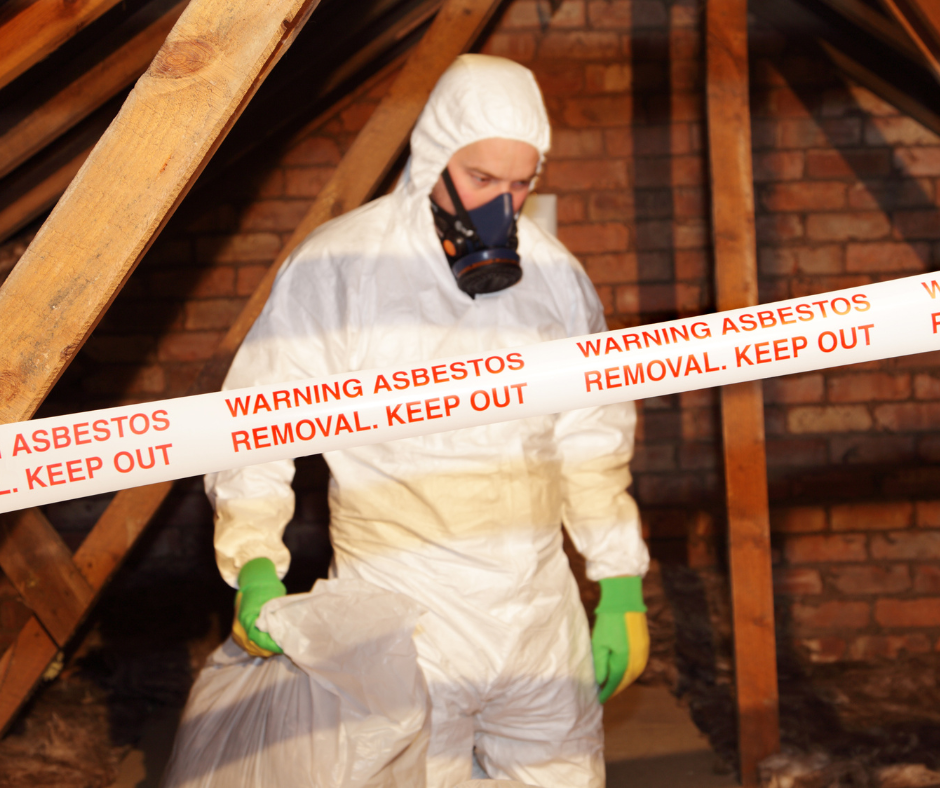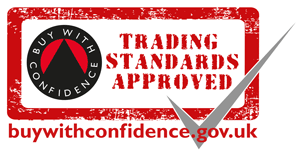
Today, it is more than evident that asbestos can cause cancer and other health conditions, which is why it is imperative that only correctly trained operatives handle it. The effects of long-term exposure to asbestos typically don’t show up until 10-40 years after initial exposure.
Asbestos can be found within domestic and commercial properties built before the year 2000. From pipe lagging and sprayed coatings to vinyl floor tiles and cement sheeting for garages, asbestos was used within various building materials. We are taking a look at what PPE and RPE is, why it is imperative when dealing with asbestos as well as the specifications required.

What is Personal Protective Equipment (PPE)?
Personal Protective Equipment (PPE) is any protective clothing and equipment designed to protect the wearer’s body from injury or infection.

What is Respiratory Protective Equipment (RPE) ?
Respiratory Protective Equipment (RPE) is a type of PPE which is specifically designed to protect the wearer from airborne hazards in the form of dust , fume , gas and vapour.
There are two types of RPE : Respirators and Breathing Apparatus. Respirators use filters to remove contaminates from the air being breathed in. Respirators come in two types Non-Powered respirators and Powered respirators.
Breathing Apparatus is linked up to an air cylinder or air compressor to supply breathing-quality air from an independent source.
**REMEMBER : Always check what type of asbestos you are dealing with before you start to remove it ***
Why is PPE required when removing asbestos?
Although strict controls need to be put into place to avoid the release of asbestos fibres, the risk must be minimised even more by using the correct PPE.
If you intend to remove asbestos yourself at home, it is imperative that you follow HSE Guidelines to do this and ensure you have followed all steps to avoid asbestos release before attempting to remove asbestos yourself.
***REMEBER : PPE and RPE are the last lines of defence against asbestos fibres. Strict control methods need to be put into place to safely avoid the release of asbestos fibres ***
What PPE must be worn when removing asbestos or if asbestos may be present
When removing asbestos or if asbestos is present then the following PPE is required:
Overalls – Disposable protective overalls
Footwear – Appropriate footwear must be worn.
RPE – Respiratory Protective Equipment.
Overalls for Asbestos Removal
Specification
Disposable overalls – Type 5 (BS EN ISO 13982-1+A1)
Type 5 overalls are made from a material which protects against particle penetration
If working outdoors, waterproof overalls may be required
Tips for the correct use of overalls
- To prevent ripping the overalls at the seams, it is advisable to wear one size too big
- If cuffs are loose , seal them with tape
- Avoid wearing long sleeve shirts underneath, these are harder to cover properly
- Ensure the legs of the overall are worn over footwear and not tucked in. Tucking them in lets dust into your footwear
- Wear the hood over RPE straps
Disposing of overalls after working with or being exposed to asbestos
Overalls must be correctly removed (Follow HSE Decontamination Guidance ) and disposed of as asbestos waste. The overalls should be placed within a red , clearly labelled asbestos bag and tied up, followed by placing the red bag within a clear bag and again tied up.
***CAUTION : NEVER TAKE USED OVERALLS HOME – ALWAYS DISPOSE OF THEM AS ASBESTOS WASTE***
Footwear
Safety boots are preferable when working with asbestos.
Choose boots without laces because they are easier to clean. Asbestos fibres can stick to boot laces.
Disposable overshoes can be worn , however this is not advised due to them being a slipping risk
Gloves
If you wear gloves, use single-use disposable gloves and dispose of these as asbestos waste.
Respiratory Protective Equipment (RPE) – Correct Masks to wear when removing Asbestos
This guidance is for the shortest duration, Non-Licensed Asbestos Removal. Ensure you check the HSE website for further guidance on the correct section and use of RPE when removing and disposing of asbestos.
Respirators or RPE must be worn at all times when asbestos is present or likely to be present to minimise the risk of breathing in asbestos dust.
Suitable types of RPE:
RPE with a UK-Assigned protection factor (APF) of 20 or more
disposable respirator to standards EN 149 (type FFP3) or
EN 1827 (type FMP3);
half-mask respirator (to standard EN 140) with P3 filter;
semi-disposable respirator (to EN 405) with P3 filter.
Respirator use tips:
- Ensure the respirator fits the wearer correctly
- These respirators are not suitable for people with beards or stubble – hooded respirators should be used in these situations
- These respirators are not suitable for long or continuous use – power-assisted respirators are required in these situations
- Disposable RPE should be disposed of asbestos waste after one use – Do not re-use disposable RPE
***IMPORTANT : If RPE stops working or you think it has stopped working – you must stop work immediately and leave the area***
Training
Correct training in the use, maintenance, inspection and storage of RPE is essential.
The wearer must know how to check their RPE to ensure it is working correctly, how to check it fits, how to identify and replace worn/defective parts and the limitations of the RPE they are using.
REMEMBER : This guidance is for most short duration, Non-Licensed Asbestos works, ensure you check with the HSE website (RPE Guidance) on what RPE is required for the works you are carrying out

RPE FACE FIT REQUIREMENTS
Face fit testing is a process of checking RPE to see if it offers adequate protection to the wearer. By ensuring the best possible seal to your face , it reduces the chances of asbestos fibres entering the mask and being inhaled.
For RPE to be suitable it must match the wearer – it will safeguard your health
There are two types of Face Fit Testing
Qualitative (Taste Test) and Quantitative (Particle Counting)
The type of test required will depend on the type of mask. Either test must be carried out by a competent tester. More information on Face Fit Testing can be found on the HSE website
Inspection , maintenance and storage of RPE
Anyone using RPE should be trained in the Inspection, use, maintenance and storage of it. RPE should be kept clean and in good working order. This can be done correctly by following the manufacturer’s instructions. Before use, check the RPE for damage every time. For reusable masks, thorough checks should be carried out monthly.
REMEBER : Never leave respirator lying around where it can collect dust
CAUTION : Never dangle a respirator around your neck
How is Asbestos-contaminated PPE disposed of?
Disposable overalls and masks should be removed carefully 0 following HSE guidance (LINK0 , and disposed of as asbestos waste. Placed within a red , clearly labelled asbestos bag and tied – the red bag should be placed within a clear bag and then tied again. Asbestos warning labels should be attached to bags if they are already labelled.
Boots should be decontaminated by vacuuming with a H-Vac and then wiped with a disposable damp cloth. The cloth and H-Vac bag should be disposed of as asbestos waste.
Reusable masks RPE should be cleaned thoroughly and dried. An inspection should be made to ensure there is no damage or defects and masks should be stored in a clean , dry container
Need some advice about Asbestos waste?
Call us on 01623 272 611 and we'll be happy to help
